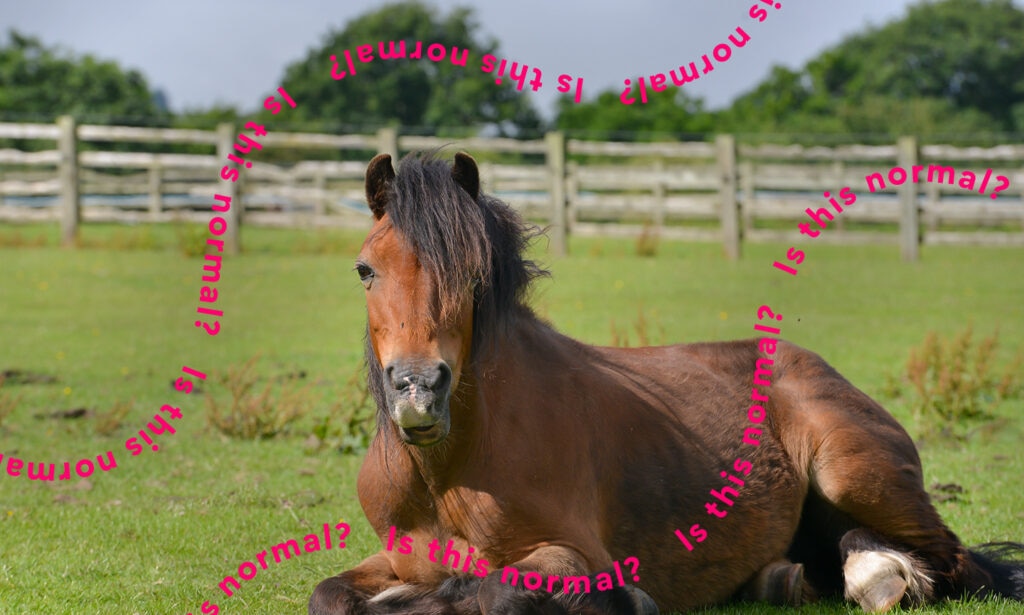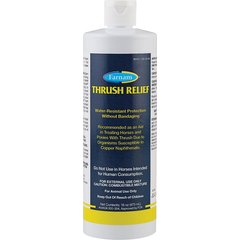Do Horses Lie Down? Is This Normal?

Photo by Chewy
Q: My horse sacks out flat on his side and sleeps so soundly I’ve had neighbors knock on the door to ask if he’s OK! Is it normal for a horse to lie down in the middle of the day?
A: Yes, this is probably normal. Sleep deprivation is more concerning than excessive sleeping in horses. If your horse lies down and gets up repeatedly, appearing uncomfortable, assess them for other colic symptoms. But routine naps are generally nothing to worry about—it just means your horse feels safe!
To learn more about when and why horses lie down, we spoke with Katherine Houpt, VMD, PhD, professor emeritus of behavior medicine at Cornell University, in Ithaca, New York; and Natalie Lord, DVM, a large and small animal veterinarian at Four Paws – Cuatro Patas, in Austin, Texas.
Key Takeaways
- Horses need daily REM sleep, just like humans, and must lie down to get it.
- Horses that rarely lie down may collapse and are often misdiagnosed with narcolepsy, when they’re just sleep-deprived.
- However, if you see your horse rise from a prone position without shaking and then lie down again right away, a quick colic assessment is in order.
Do Horses Lie Down?
Yes, horses do lie down. In fact, lying down for about 30 minutes per day is necessary to meet the average horse’s minimum REM sleep needs. A lack of REM sleep can lead horses to suddenly collapse, either in their stall or while being handled or ridden.
Dr. Houpt notes that some people never see their horse sleep lying down because most horses get their deepest sleep at night, when humans aren’t at the barn.
If your horse is in a bedded stall, check for bits of bedding stuck to their haunches in the morning to reassure yourself that they’re lying down during the night. Or put a camera in the stall and observe them from afar.
Why Do Horses Lie Down?
Horses lie down for all kinds of reasons—most of them completely normal.
To Scratch an Itch
We most often see horses lie down to roll, especially after a ride. It’s not just to shake off sweat—rolling helps stretch muscles and gives relief from biting insects.
For Deep Sleep
A horse lying flat on their side is in lateral recumbency. On their chest? That’s sternal recumbency. Horses only get REM sleep—the deep kind they truly need—when lying flat on their side.
“Horses can’t hold their head up while totally relaxed,” says Dr. Houpt. “So, they can’t safely go into REM sleep in sternal recumbency, unless the nose is supported.”
During REM, you might see twitching legs or even hear a sleepy whinny!
Because Their Bedding Feels Just Right
Freshly bedded stalls often prompt a quick lie-down. Horses tend to sleep longer on straw than on shavings, Dr. Houpt notes.
Because They Stick to a Routine
“Horses often have a preferred time and place for rest,” says Dr. Lord. “Routine is so important environmentally.”
If you know your horse’s nap schedule, try not to interrupt it. Disrupted rest can affect their cognitive function.
To Recharge After Hard Work
“Horses are athletes,” says Dr. Lord. “Just like people, they need rest to recover.”
She adds that show horses and racehorses often nap more frequently. “When I show my horse, I try to catch a little chill time myself before the ride.”
Because They’re Not Feeling Well
Lying down is usually nothing to worry about—but not always. A horse who is repeatedly getting up and down, seems distressed, lying down for long periods of time or multiple times per day, or isn’t engaging with their environment could be sick or in pain.
Both Dr. Houpt and Dr. Lord say these could be signs of colic, laminitis, or another condition affecting one or multiple limbs.
When—and How Often—Do Horses Lie Down?
Horses tend to get a total of five to seven hours of sleep in each 24-hour period, but most of that comes in the form of non-REM (NREM) sleep. Horses can enter NREM sleep while standing and typically do so in three- to four-minute bursts many times throughout the day.
REM sleep in horses can only be achieved while lying down. Most horses do this at night, for at least 25 minutes. Some horses get as much as three hours of REM sleep in a night, usually separated into chunks of a few minutes at a time. If you worry that your horse isn’t lying down enough, a night vision camera in the stall might put your mind at ease.
Recommended Product
Horses lie down when they feel safe—something influenced by lighting, bedding, herd dynamics, and past experiences. Young horses nap more during the day, while seniors, especially those with arthritis, may prefer warmer times. A joint supplement like Cosequin ASU can help ease stiffness and support restful sleep.
Recommended Product
“Leaving lights on horses overnight does stress them out,” says Dr. Lord. “Long periods of time with the lights left on can make them sleep deprived.”
How Long Is It Safe for a Horse To Lie Down?
There’s no one-size-fits-all answer to how long is too long. Every horse has different sleep needs. If your horse has been down longer than usual, take a video and call your vet.
“A 1,000-pound horse lying still for long periods is going to have problems,” says Dr. Houpt. Lying down too long can cause pressure sores, slow gut movement (potentially leading to colic), dehydration, and even nerve damage.
Most horses won’t stay down longer than is safe. But a down horse who’s sick or injured may not have the strength to get up. Horses can also become trapped—or “cast”—by getting stuck against a wall or fence while rolling or sleeping.
When Should I Be Worried About This Behavior?
Dr. Houpt’s rule of thumb: If a horse is down for more than 30 minutes, then rises and doesn’t shake, it’s time to look closer. Start by checking for signs of colic, including:
- Refusal to eat
- Painful body language
- Restlessness or agitation
- Quiet gut sounds
- Stretched stance (“posting out”)
- Kicking at the belly or sides (with no flies around)
- No manure
- Unexplained sweating
- Repeated rolling without shaking in between
- Elevated heart rate
- Rapid, shallow breathing
- Reluctance to walk
- Limping
“Any abdominal pain can cause these symptoms,” says Dr. Lord. That includes gas or impaction colic, ulcers, liver disease, or even bladder stones. Always call your vet for suspected colic.
Recommended Product
Severe pain in multiple hooves—from founder, hoof abscesses, or advanced thrush—can also keep a horse down. Your vet may recommend:
- Thrush treatment, like Farnam Thrush Relief
Recommended Product
- Padded boots to ease hoof pain, like EasyCare EasyBoot Cloud
Recommended Product
FAQs About Horses Lying Down
Do horses lie down to sleep?
Yes, horses must lie down for at least 25–30 minutes per day to get sufficient REM sleep.
Do horses lie down on their side?
Yes. This is called lateral recumbency and is the only position in which most horses can achieve REM sleep.
Is it bad if a horse lies down for a long time?
Not necessarily, but it can be. Any sudden, dramatic change in your horse’s sleep routine warrants a call to the vet. A horse who is down and can’t get up needs emergency treatment.
Can horses sleep standing up?
They can and do every day! Most of a horse’s daily five to seven hours of sleep comes from short bursts of NREM sleep while standing up.








